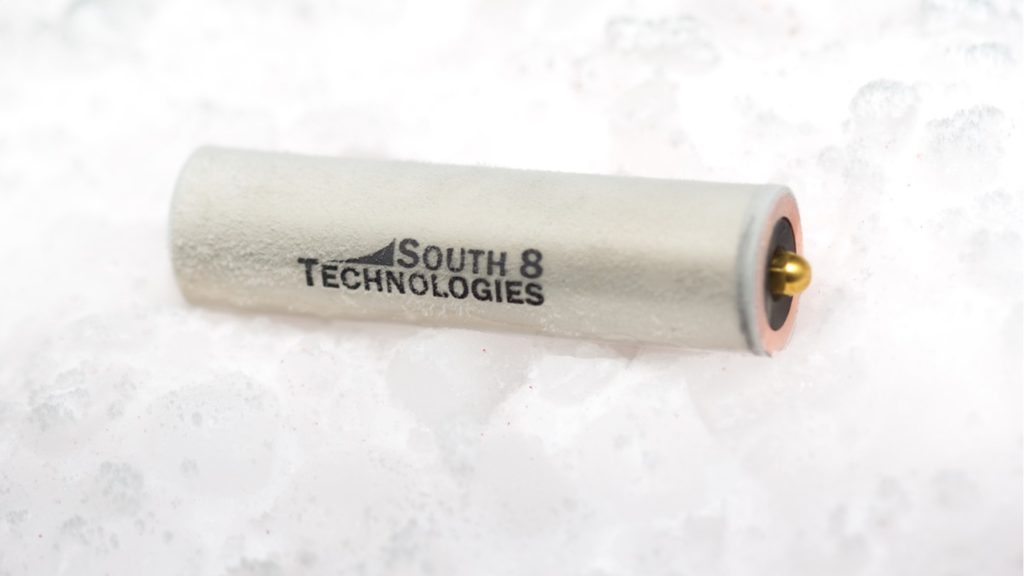June 27, 2023

South 8 Technologies, Inc. has developed a novel liquefied gas (LiGas®) electrolyte to power the next generation of Lithium-ion batteries and advances the world’s clean energy future.
Liquefied Gas (LiGas®) electrolyte

An electrolyte is the battery component that transfers ions — charge-carrying particles — back and forth between the battery’s two electrodes, allowing the battery to charge and discharge.
Unlike common battery electrolytes which are liquid at room temperature, or solid-state electrolytes under development, the team at South 8 Technologies is the first to develop and commercialize a novel, patented Liquefied Gas Electrolyte (LiGas®), for next-generation Lithium batteries. These non-toxic electrolytes use solvents that are normally gaseous at standard pressure and room temperature but may be liquefied under moderate pressure and used as an electrolyte within the cell.
Most EVs today are powered by Lithium-ion batteries, a decades-old technology originally developed for use in laptops and cell phones. All those years of development have helped push prices down and improve performance, but there is still room for improvement as battery safety continues to be a concern for consumers. In contrast to conventional liquid electrolytes which are a catalyst for thermal runaway, the non-toxic LiGas® electrolytes may safely and quickly vent from a cell after physical or electrical abuse (ex. crush, high temperature, short circuit) allowing the cell to fail safely without thermal runaway reactions or thermal propagation to neighboring cells.
In addition to optimal safety, South 8’s electrolyte enables battery operation in extremely low temperatures. This unique ability, due to its low viscosity and freezing point, makes it possible for EVs to maintain driving range in cold weather. LiGas® electrolytes unlock possibilities to further improve the battery technology by boosting capacity; speeding charging time; expanding e-mobility into all climates and temperature extremes; bringing down the cost of batteries so more people can afford to go electric; increasing battery power so vehicles go further faster; and most importantly, making Lithium-ion batteries safe from fire and explosion.
Stay Connected: